Ruisbroek Church Drawings
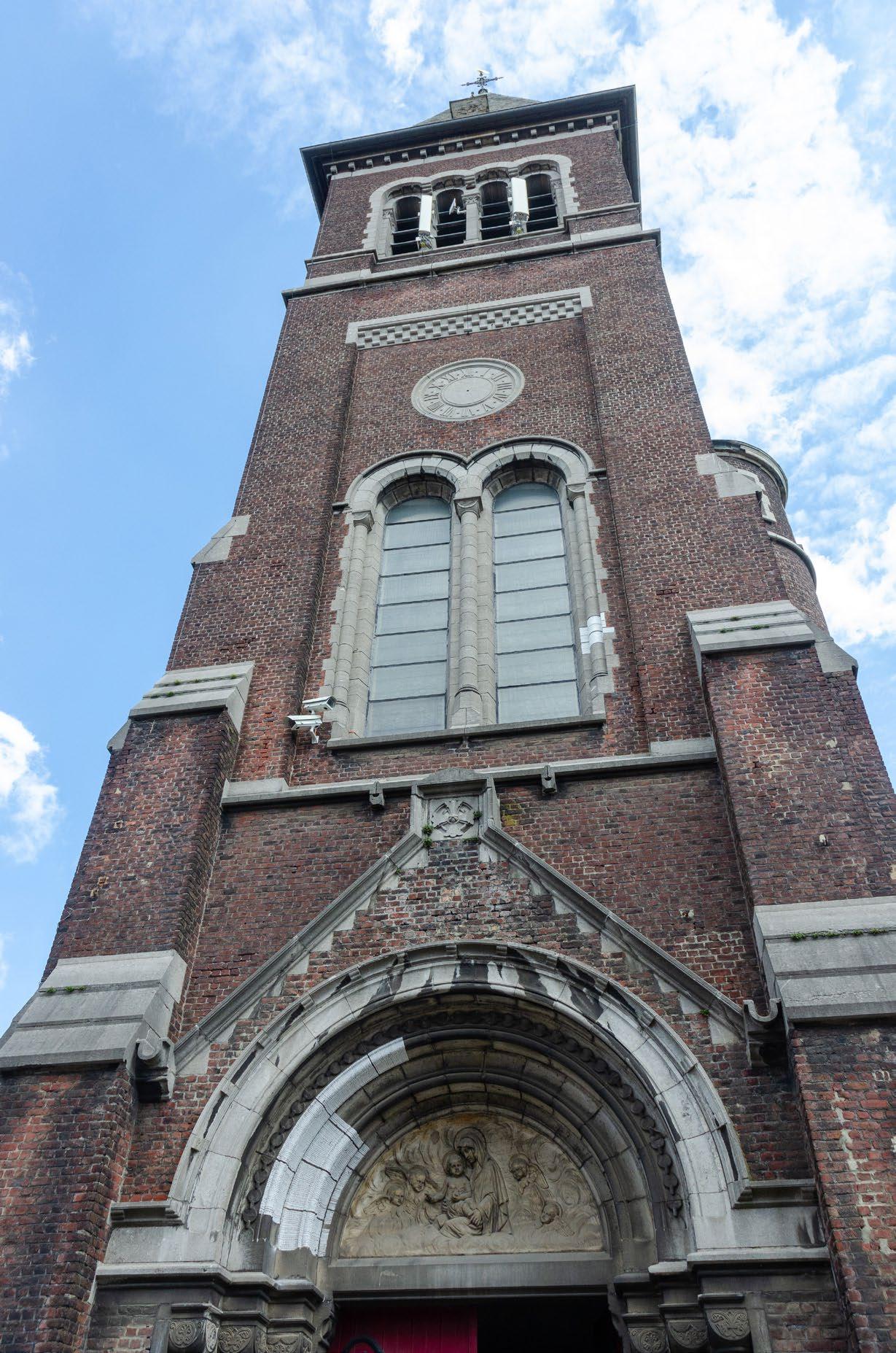
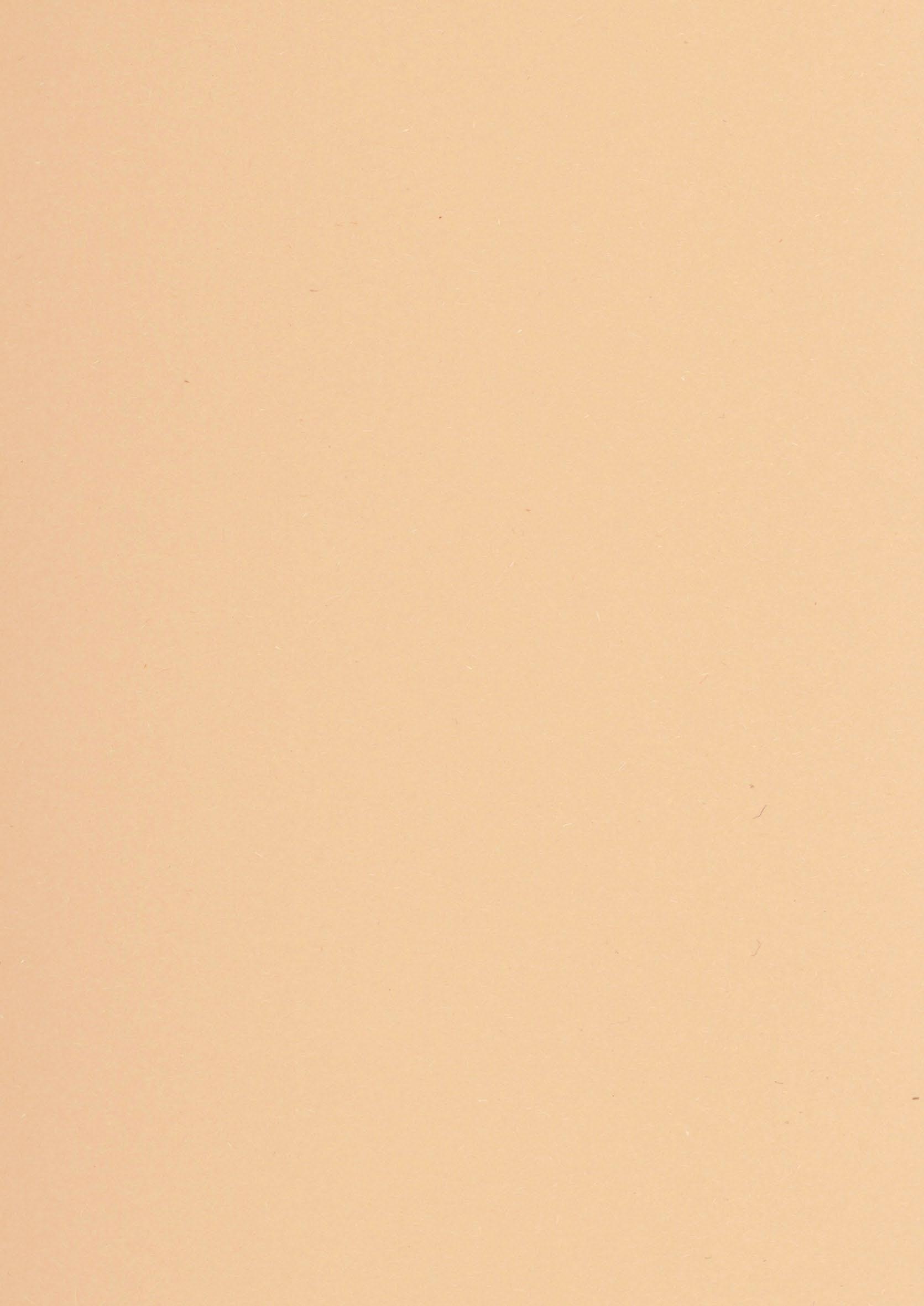

Over the course of one week, I draw on the Ruisbroek church using a boom lift. The church is named after Jan van Ruysbroeck (1293−1381), a Flemish mystic also known as ‘the Admirable.’ By writing treatises in the Dutch vernacular instead of the Latin of the Catholic church he tried to reconcile Christian universalism with the piety of the laity. In 1343 he left Brussels behind because he ‘wanted to withdraw from the tumult of the masses’. He justified his departure by claiming that there was a priest who sang off key in a voice that sounded like a tuba, a ‘vox tubalis,’ as he called it.
Standing in the boom lift, I feel elevated above God and sundry. But I’m quickly brought up short when the wheels get stuck in the wet grass. The regulars of the local pub across from the church and the publicans themselves spring into action and come to my aid. Wong, a gambler and a man with tattoos on his neck, along with Aziz and Said, are my saving angels.
It’s a luxury for me to have a boom lift at my disposal, provided by the organizers. It makes my ladder superfluous: I can get anywhere I need to reach with the lift.
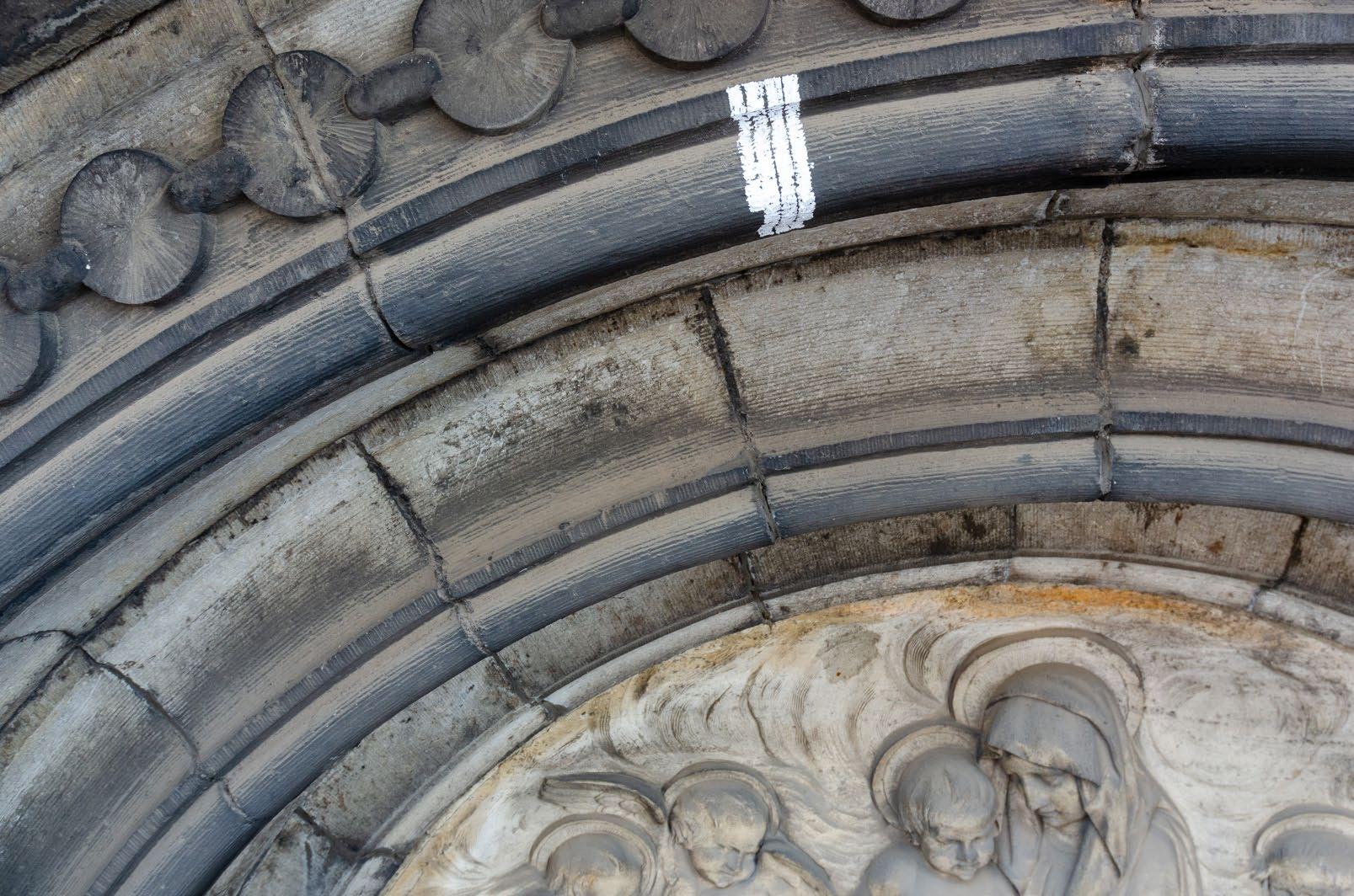
I draw the first four chalk lines on an arch above the entrance to the church. This is tucked under an alcove, so the drawing won’t be washed away in the rain and should remain there for years for all to see.

It’s coming down buckets, but I’m high and dry drawing in the alcove. Though I usually use a ruler, the rounded form here is not suited for that. So I’m drawing free hand, which is a slow, laborious process requiring great concentration.
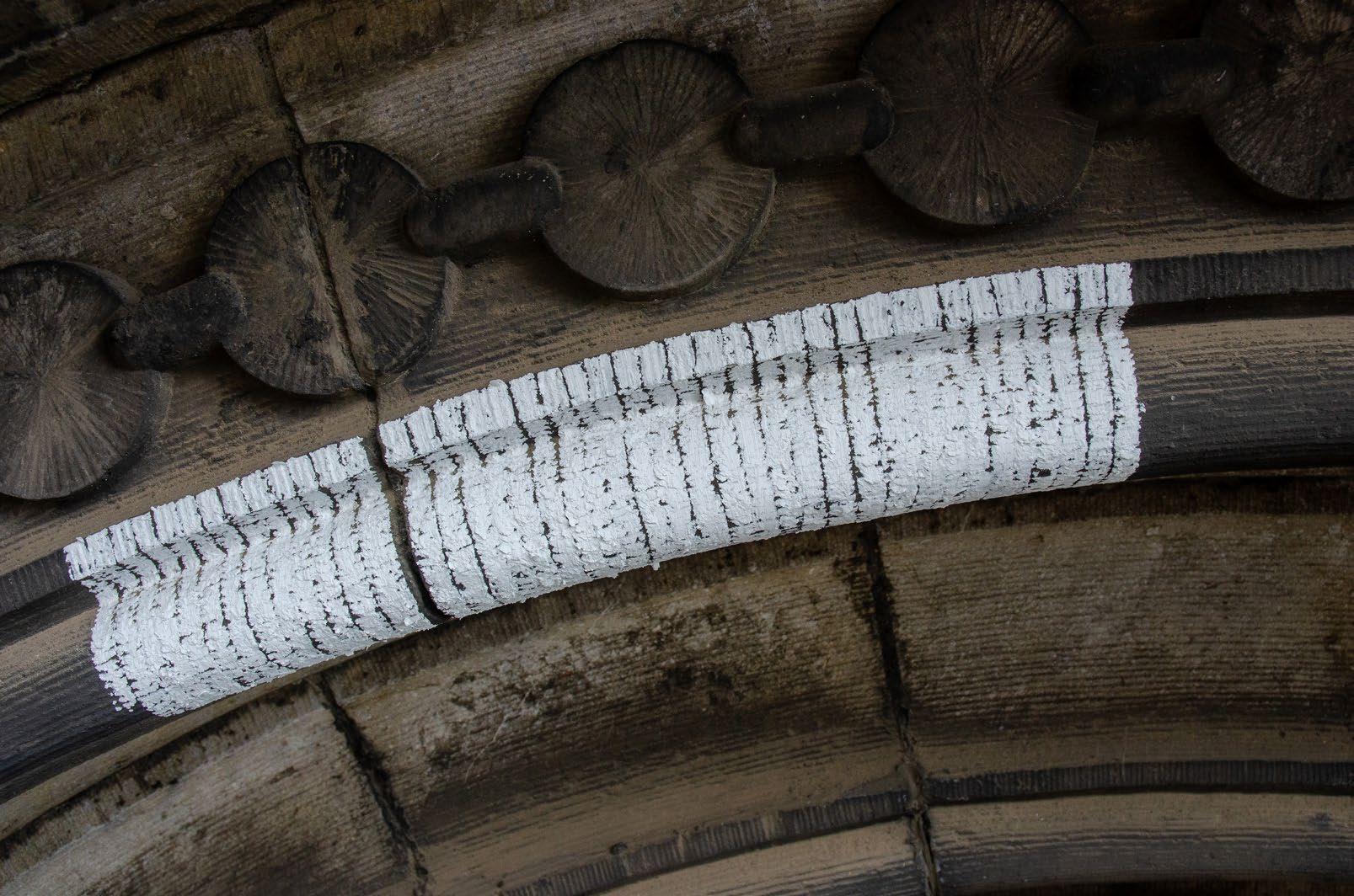
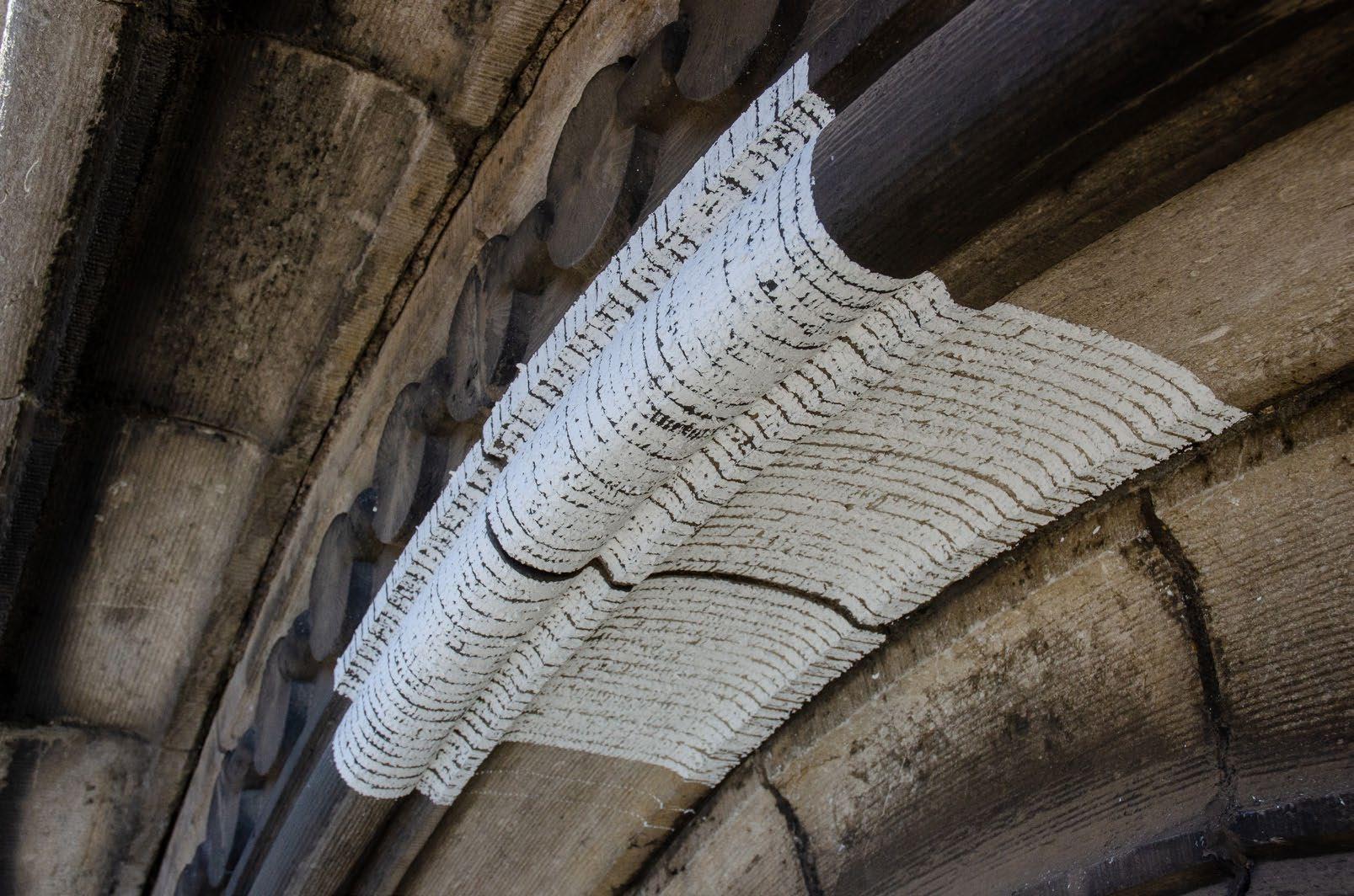
A sprightly older gentleman and two well-dressed women rest their bikes up against the church. I’m startled by a voice below.
‘What are you doing?’ the man asks. ‘I’m gracing the church with chalk lines,’ I reply.

‘We’re here to sing in the church – every Tuesday. We’ve been doing it for years,’ he says. ‘There used to be more of us, but we’re the only ones left in the choir now.’ ‘Would you like to sing with us?’ asks the younger of the two women. ‘I can’t sing a note,’ I reply. The man tries to convince me anyway: ‘Everyone can sing.’ But I’m here to draw, I think to myself.

The three of them go on inside while I continue with the drawing. I hear the sound of singing coming from the church.
I wonder whether it was the right choice not to join the thinning ranks of the church choir.

The next day the sun is shining. I start a second drawing on the church tower. I decide that as soon as one of the three singers shows up again, I’ll ask whether I can join them next week.

You can get a good view of the drawing from café De Ruisbroekenaar across the street, which has ‘at Aziz & Said’s’ painted on the window in gold curlicue letters. I take a seat at the bar and order a cup of coffee. There’s a black-andwhite photo on the wall from the days when the café would fill with people after a church service. Seated next to me is a burly fellow with his neck covered in tattoos. Another fine gentleman is playing the fruit machine. And a lean Asian man gives me a friendly nod.
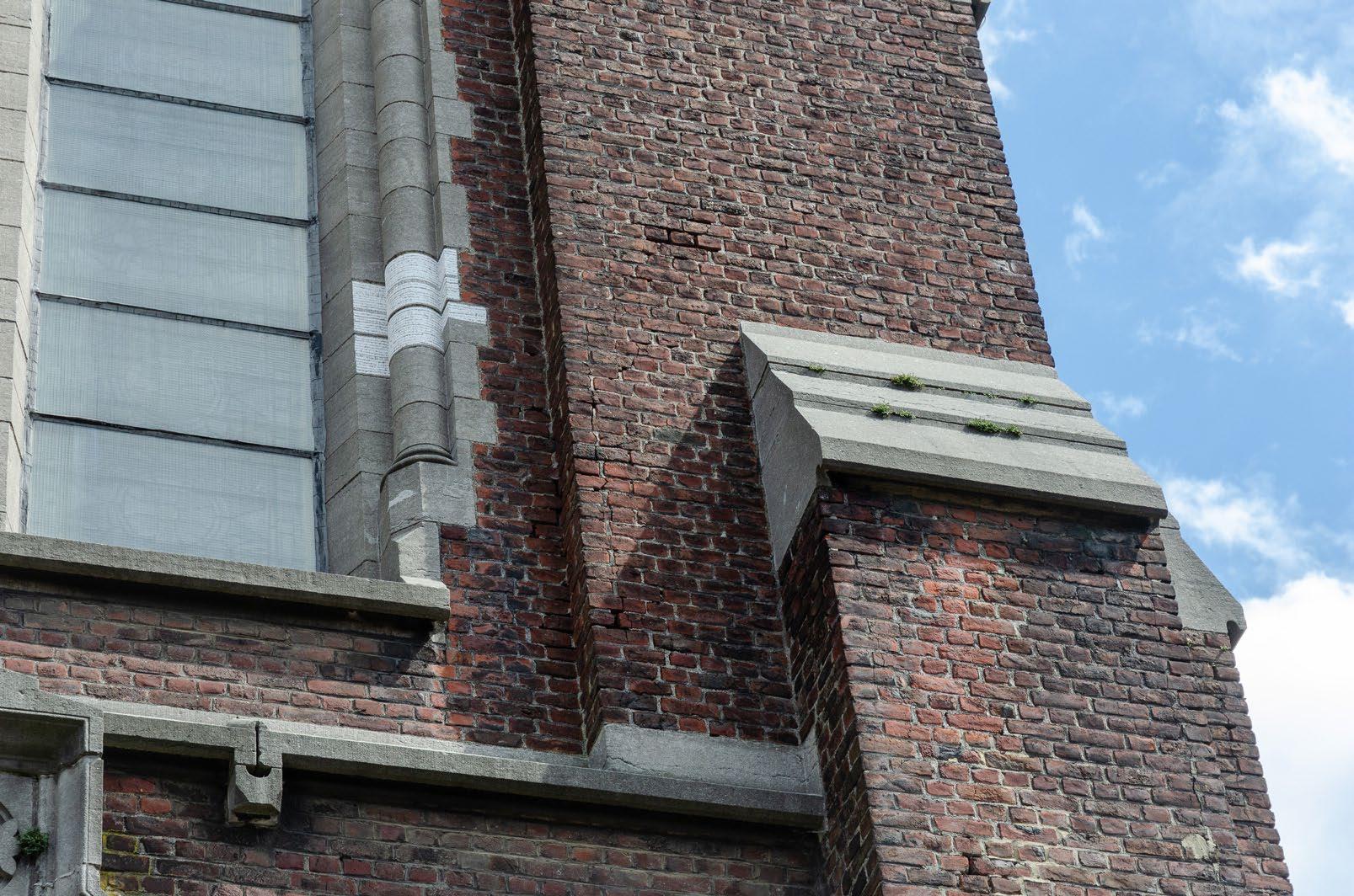
‘Are you renovating the church?’ the pub owner asks. ‘No, no: it’s just chalk,’ I say. The tattooed gent gives me a dubious look, but the publican nods approvingly. ‘The church is going to be renovated in the next year. They’re planning to knock down the side wings and the rest is going to become a social services centre – or whatever they call it,’ he continues. ‘That could be good in terms of clientele. How long have you been here?’ I ask. ‘I’ve been running the café for three years now, together with my brother Aziz.’ ‘Was it always called the Ruisbroekenaar?’ I enquire. ‘No, we came up with that name ourselves. It used to be called De Parking,’ he replies.
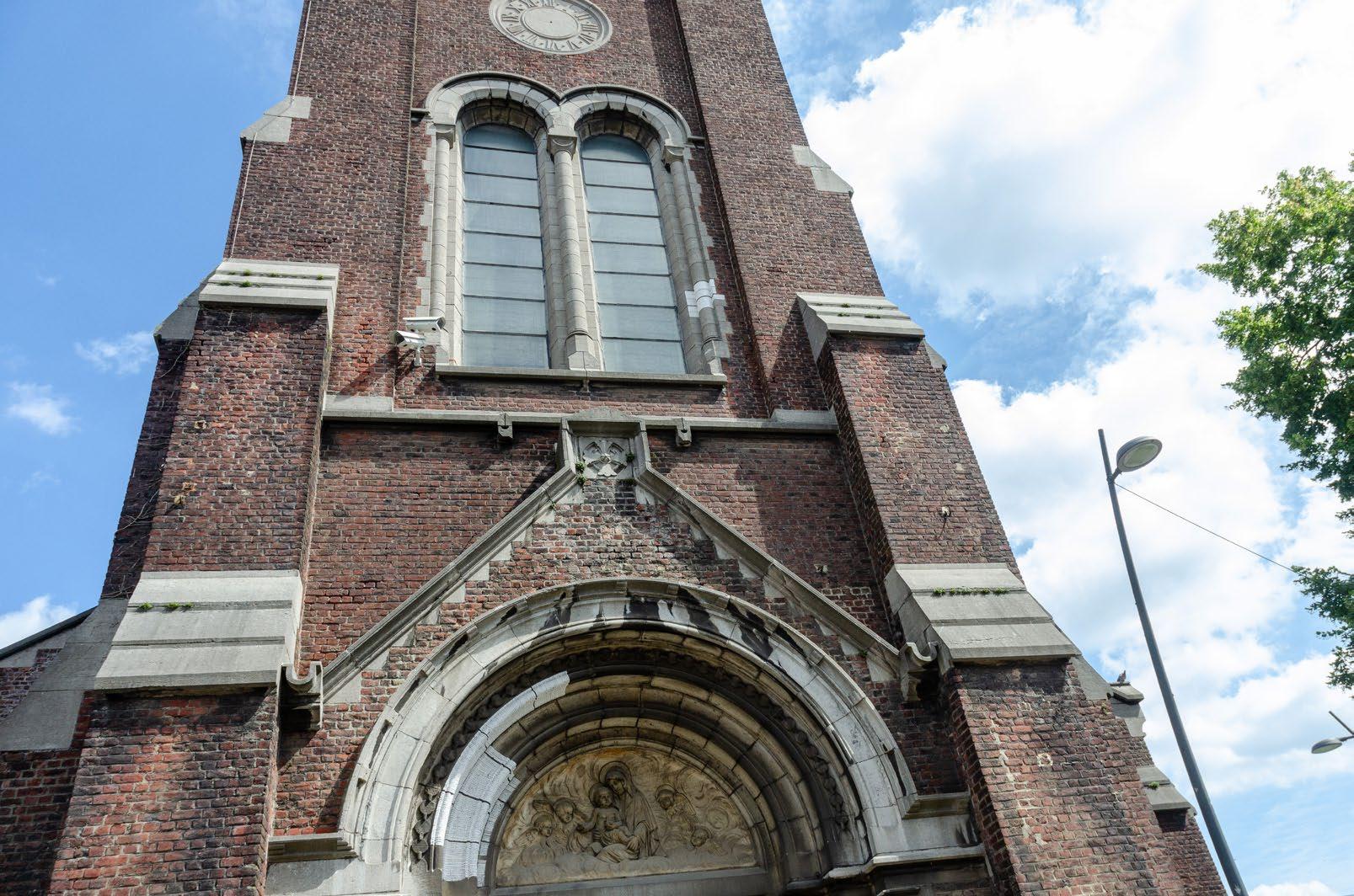
I draw on the side aisle since apparently it’s going to be demolished in the near future. A couple of young guys play football underneath me and sometimes kick the ball high in the air. Aziz is standing in front of his café. ‘Coffee?’ he calls up.
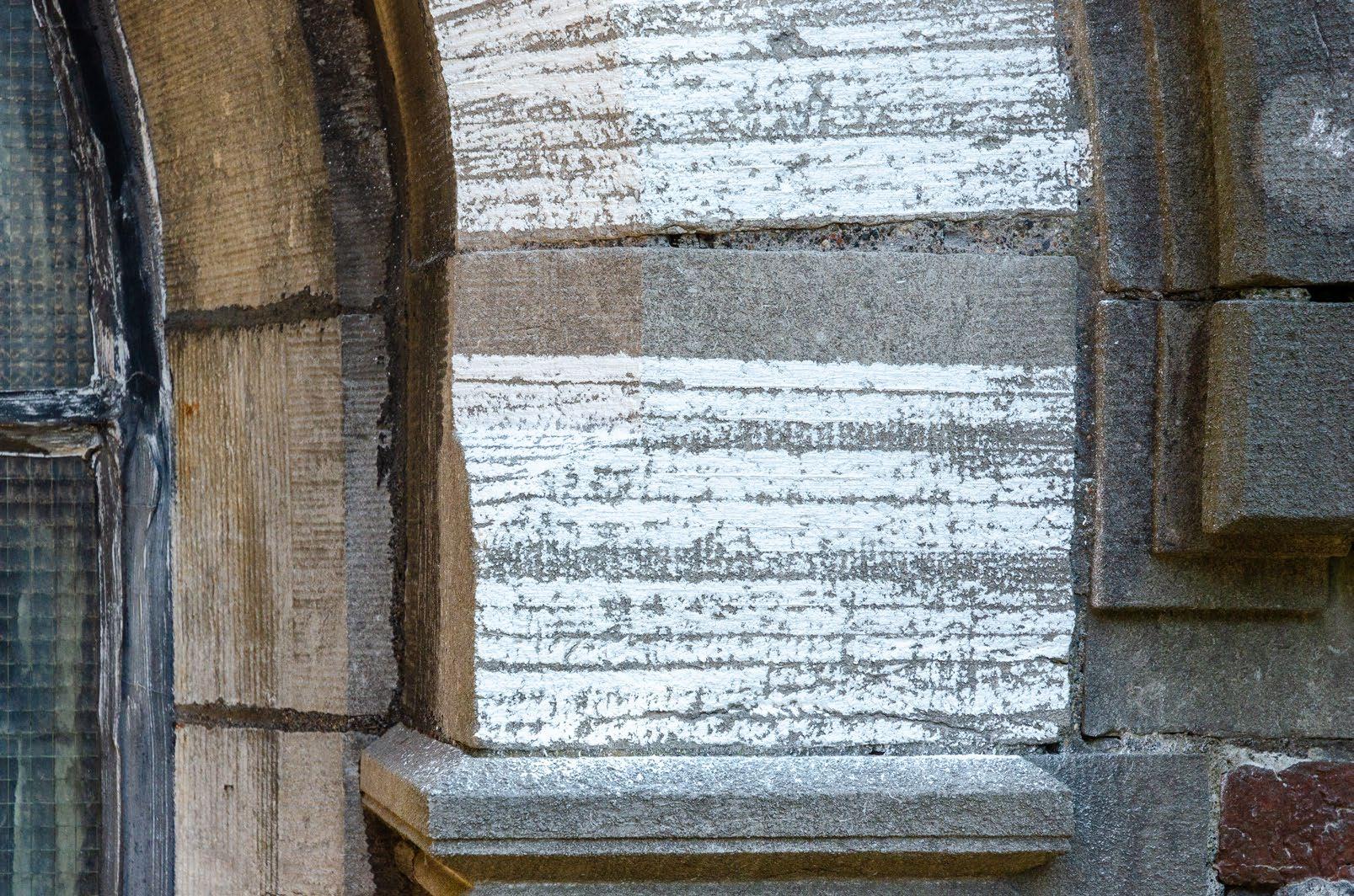

After I descend to the ground, I accidentally drive the boom lift over grass that is still wet from all the rain. The wheels get stuck.
The Asian gentleman from the café is named Wong, and he turns out to be a whizz at driving boom lifts. He takes over the steering wheel; with the guidance of Aziz, Said, the gambler and the tattooed guy, he wrangles the boom lift back onto the street.
He then drives the boom lift over to the aisle on the other side of the church. ‘This is better. There’s no grass here,’ he points out.
A large rose window provides the surface for the next drawing.
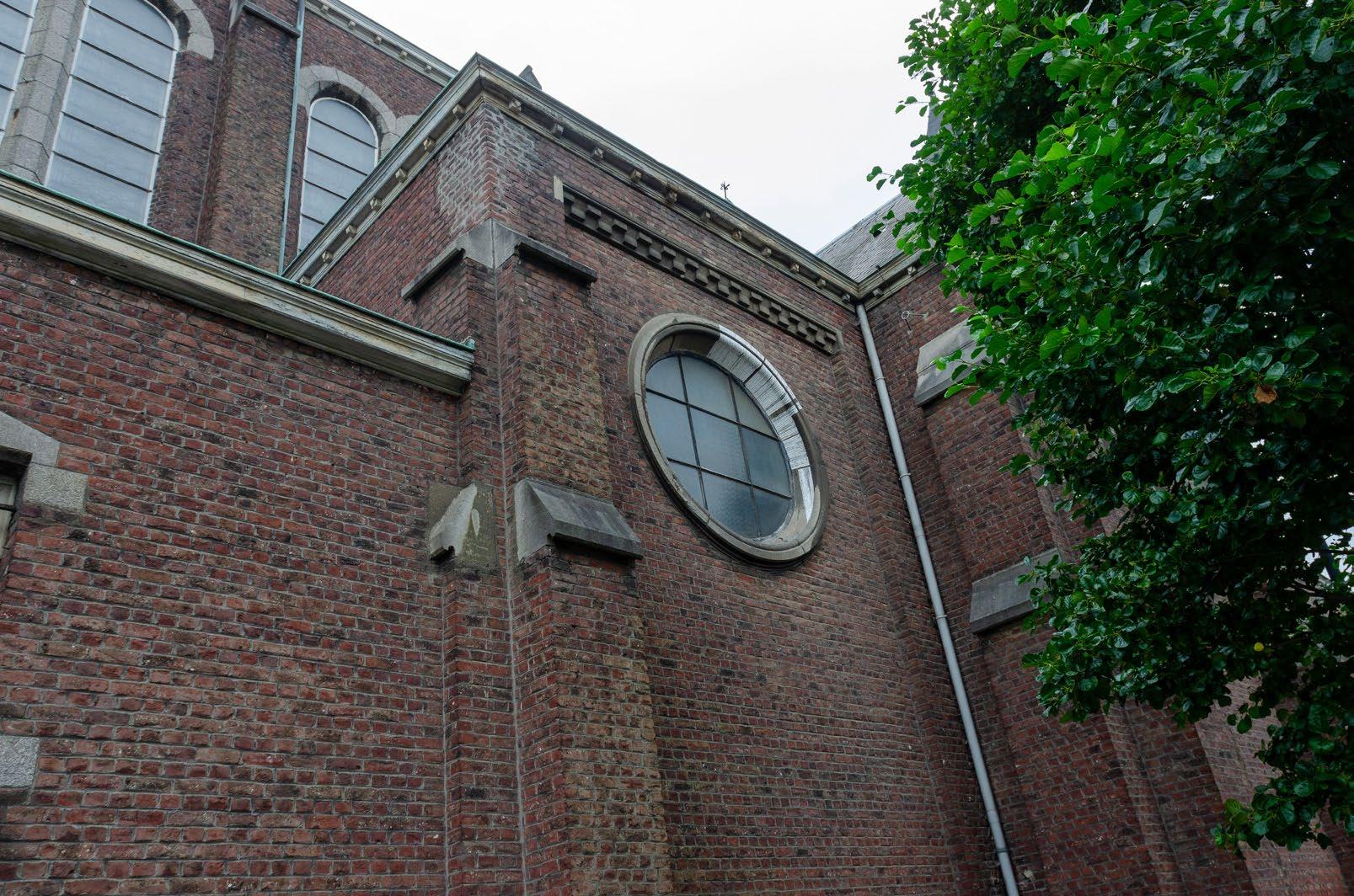
Because of the secondary glazing on the outside, you can no longer see the hundred-year-plus stained glass that’s on the inside.
The chalk lines have the same thickness as the cross-hatched lines of the outer safety glass.

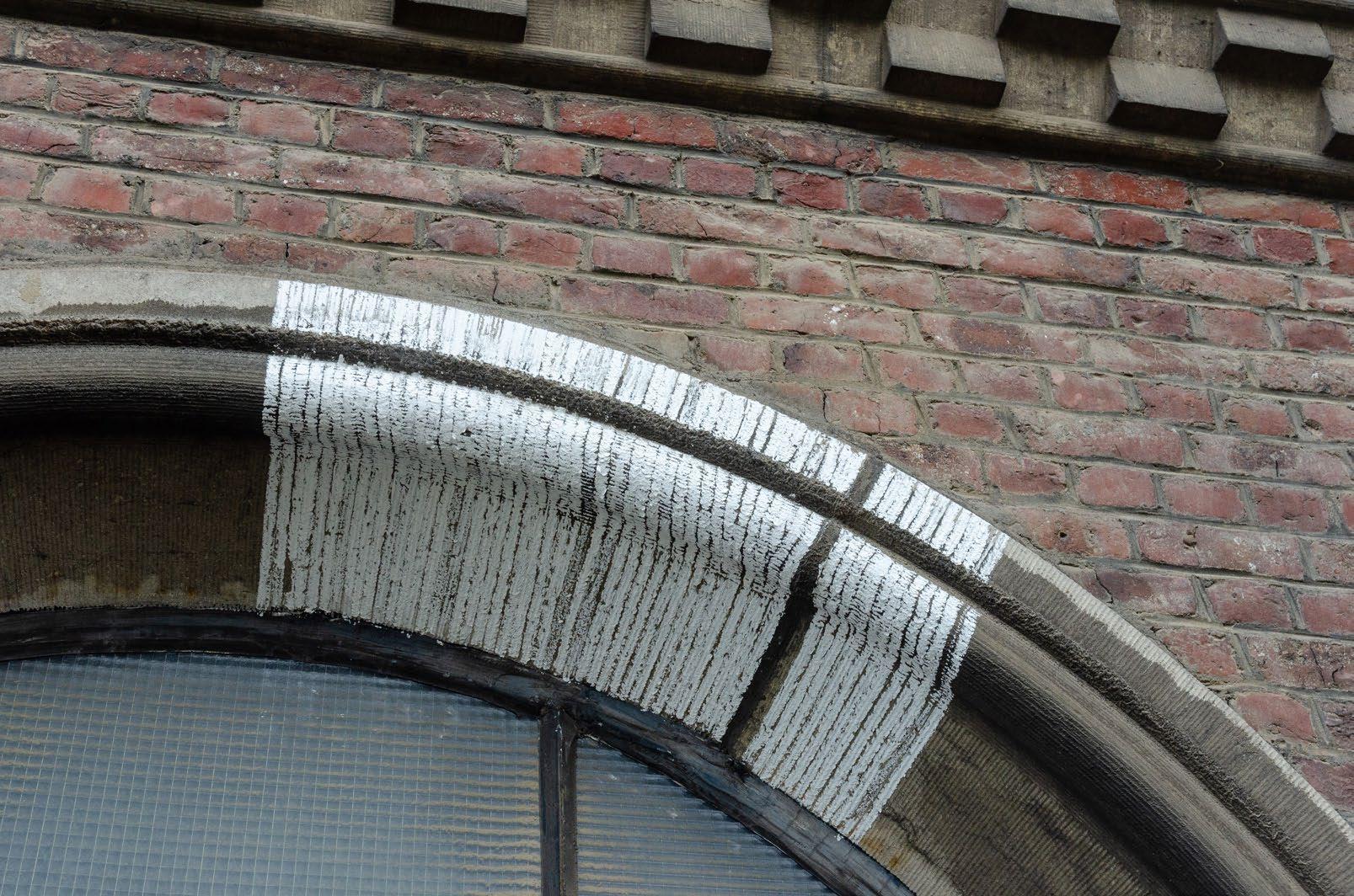
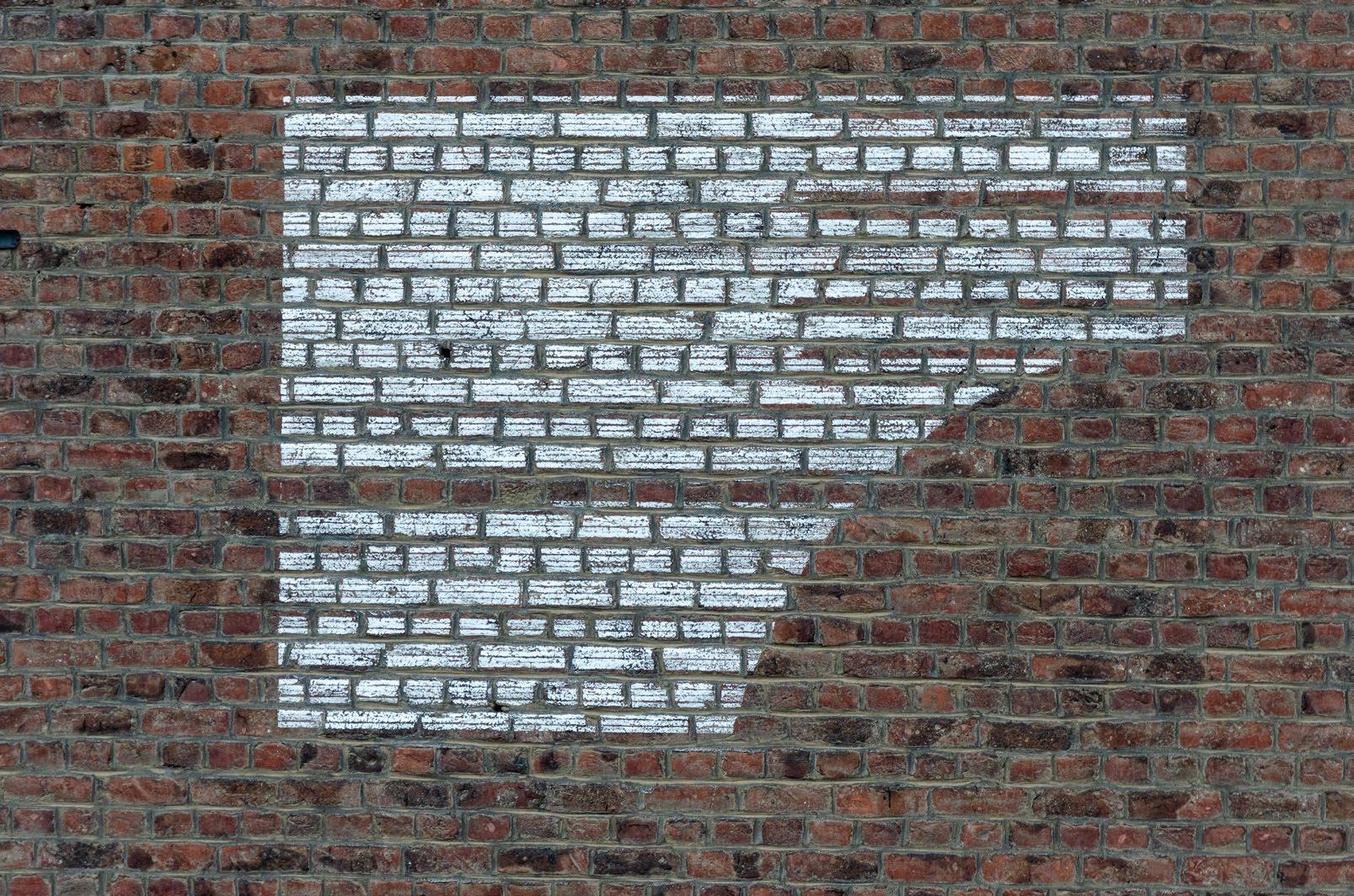
On the blind wall at the back of the church I draw two rectangles with rounded cut-outs.
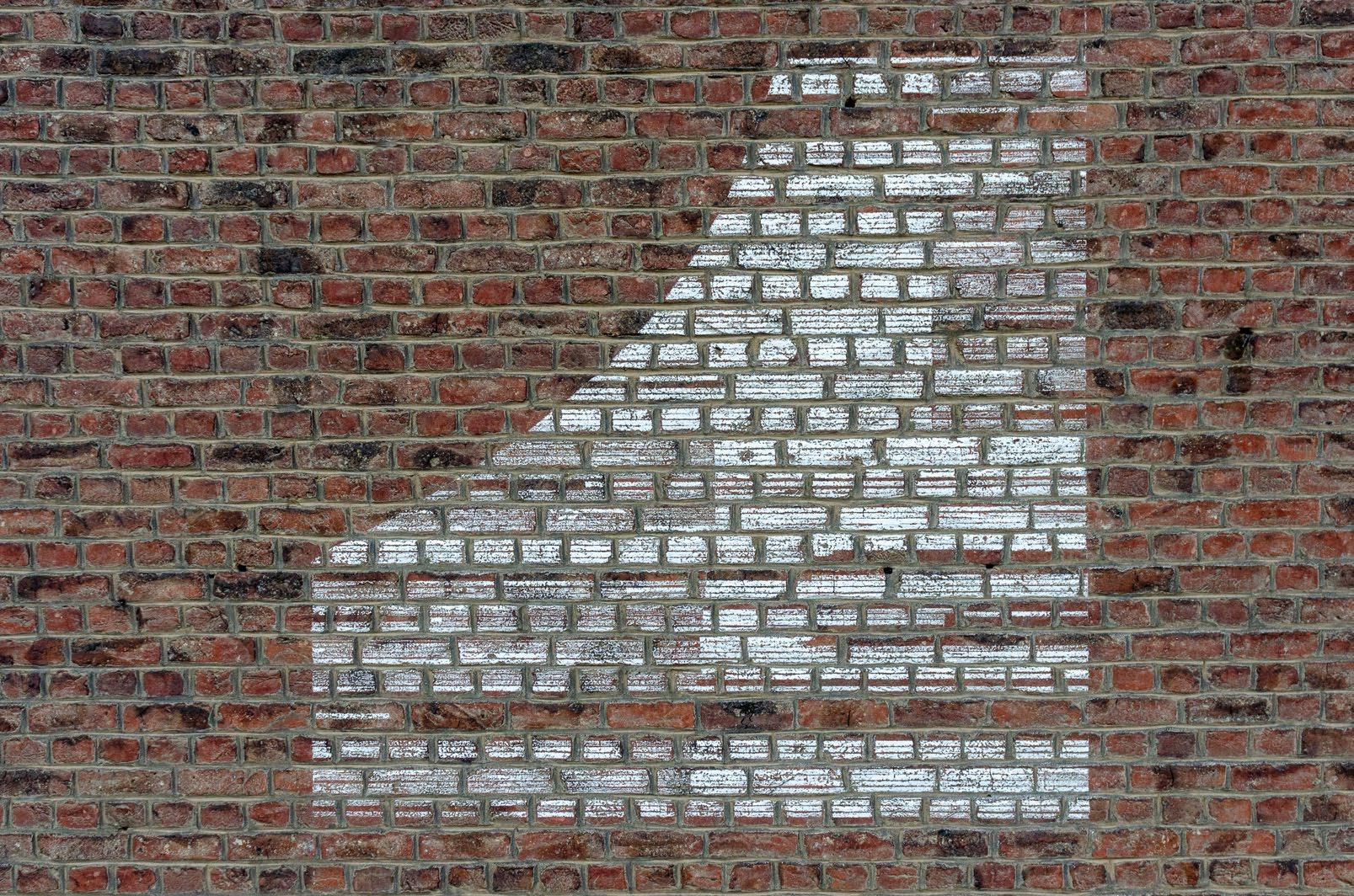
‘The cut-outs also form a rosette shape,’ I explain to Wong.
‘Let me know when you’re done, and I’ll move the boom lift for you,’ he offers.
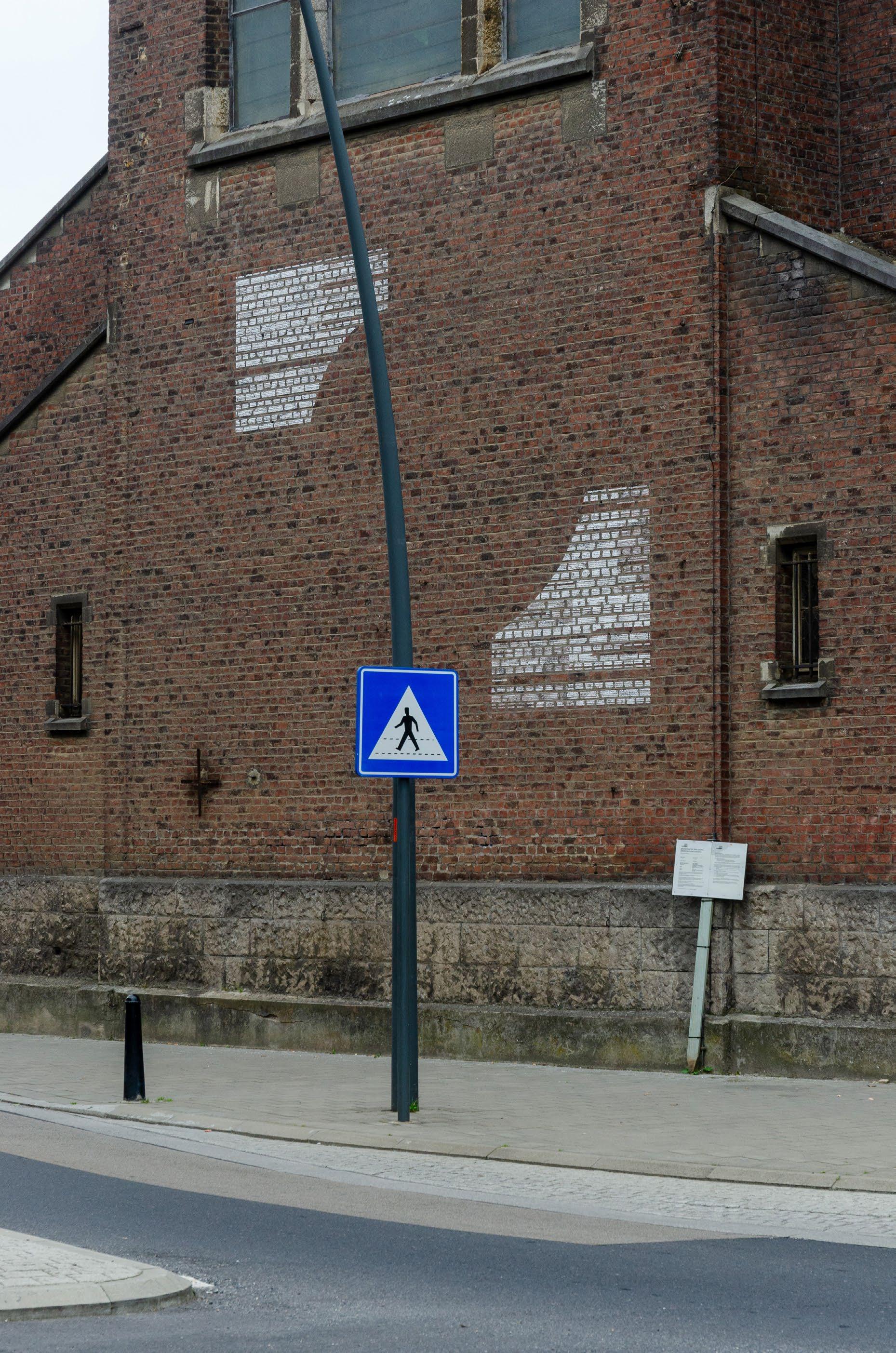
I take a look at my drawings from the intersection. Just then, the woman who invited me to join the church choir last Tuesday comes by on her bicycle.
‘Good thing you’re still here. I wanted to write something for our church newsletter, “Church & Life,” she exclaims.
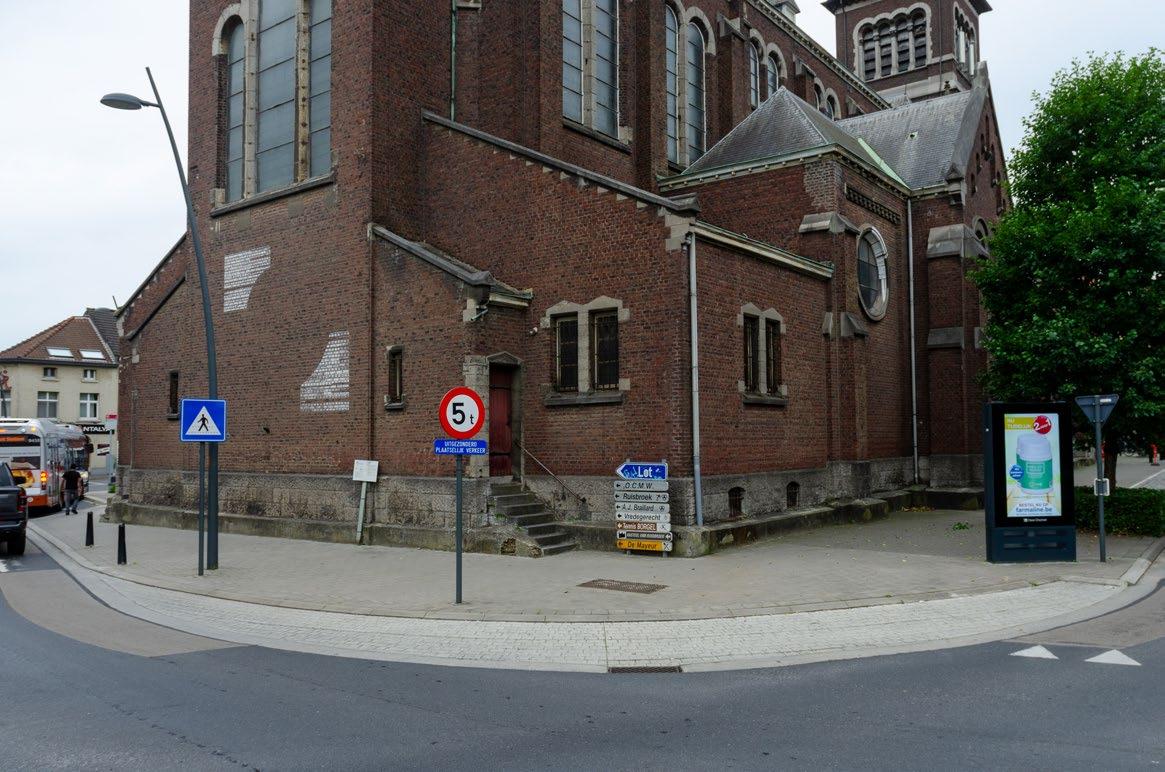
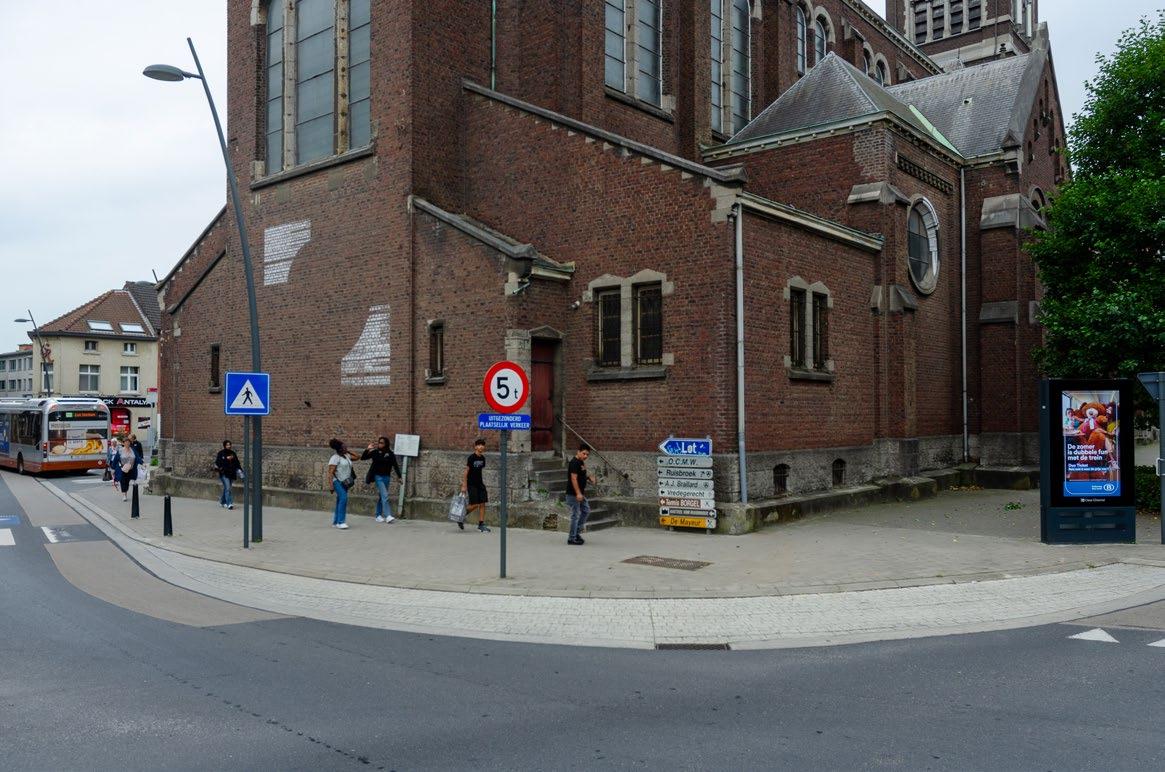
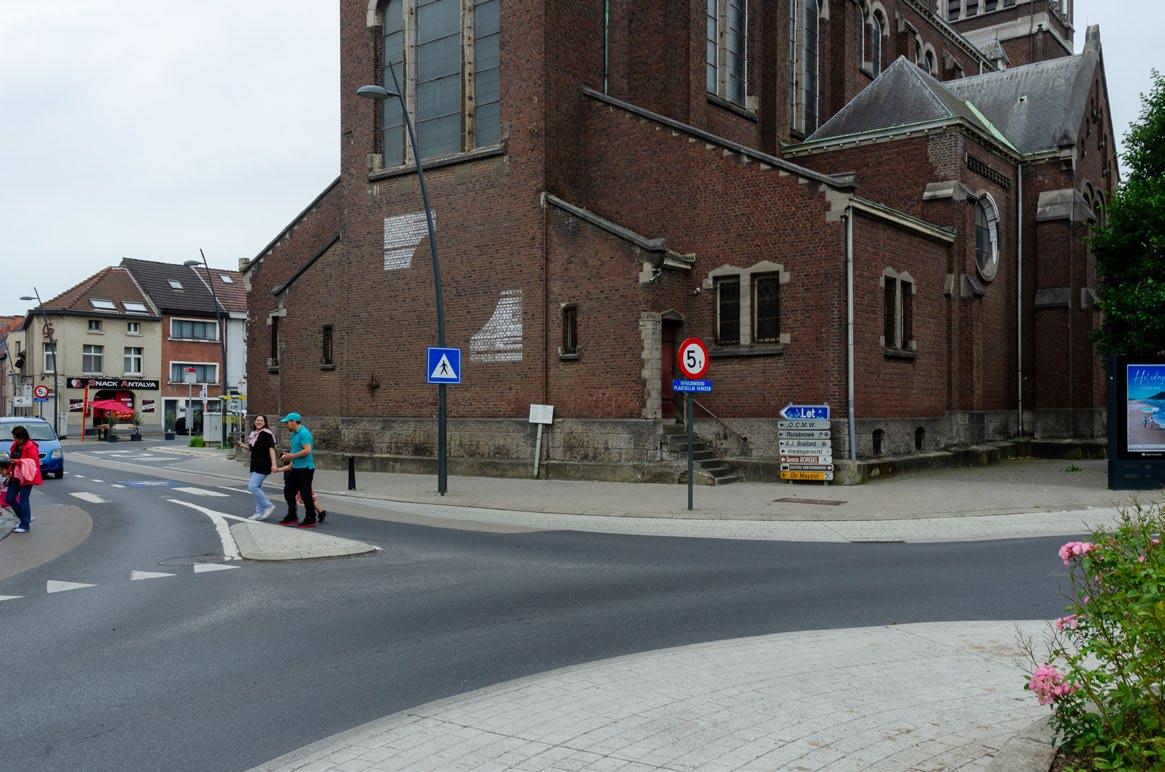
We take a walk around the church together. I show her all the drawings and tell her about Wong and the other Ruisbroekenaars, as the locals call themselves, who helped me.
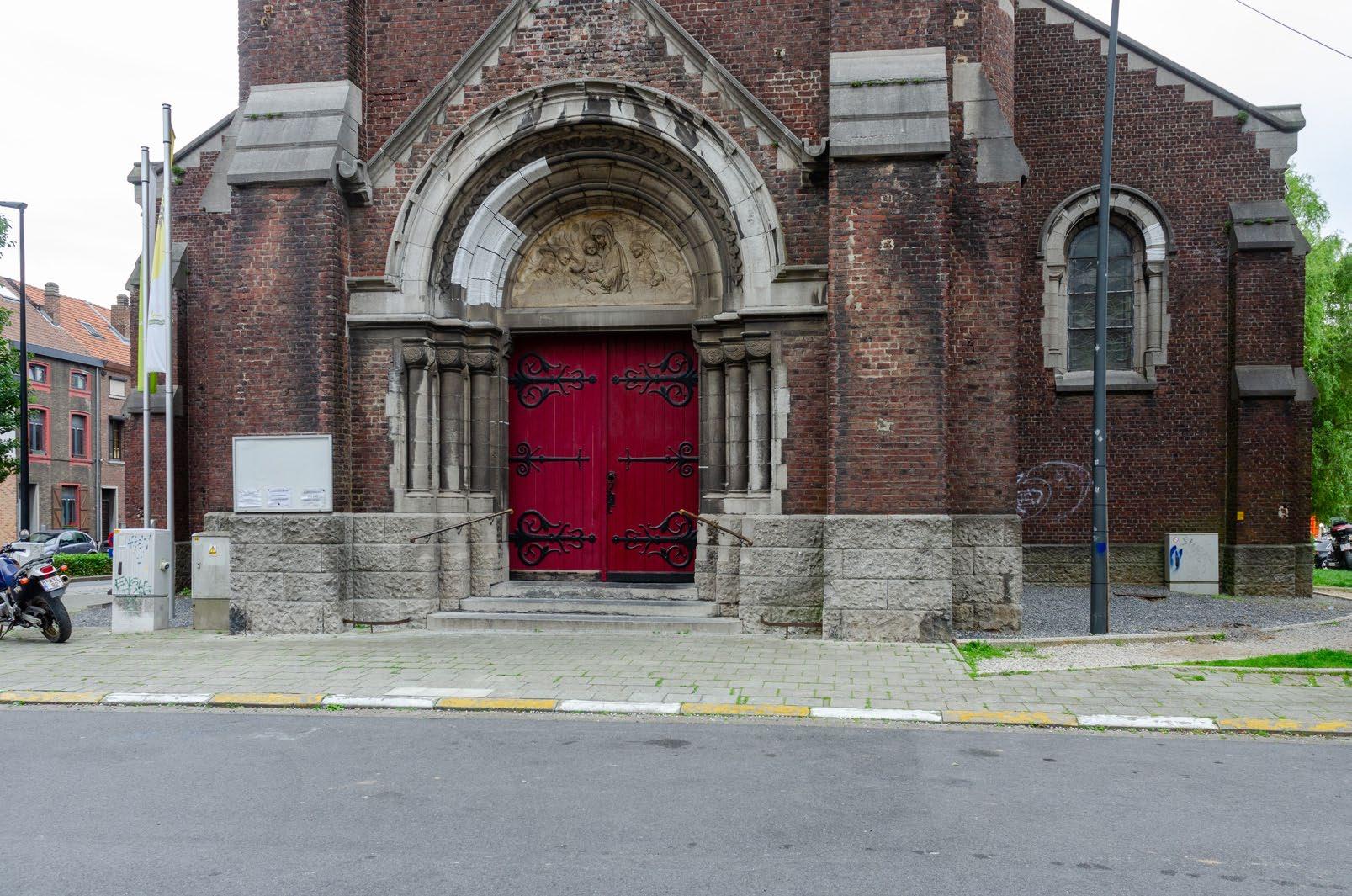
‘Your chalk lines look a bit like piano keys,’ she says.
‘It’s a shame I didn’t join you in singing last week,’ I lament.
Colophon
Drawings, text, photographs: Bart Lodewijks
Editing original Dutch text: Lucy Klaassen
English translation: Nina Woodson
Image processing: Huig Bartels
Design: Roger Willems

Publisher: Roma Publications, Amsterdam
This project was made possible by: GIST, eerste triënnale van de Zennevallei
Thanks to: Benedict Vandaele, Steven Lots, Jan Kempenaers, Wong, Aziz & Said, Micheline, Paulette, Guy, Josef-Gabriëlle
GIST, first triennial of the Zenne Valley / Belgium / 26 August to 5 November 2023
© Bart Lodewijks, 2023
www.romapublications.org/Bart_Lodewijks_Library

